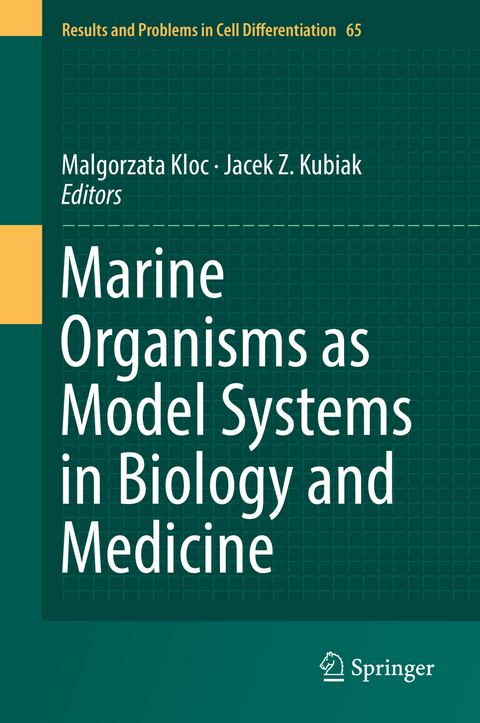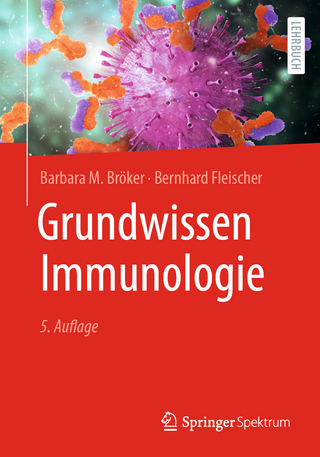
Marine Organisms as Model Systems in Biology and Medicine
Springer International Publishing (Verlag)
978-3-319-92485-4 (ISBN)
Addressing that gap, this book introduces readers to new model organisms like starfish or nemertera. By showing their benefits with regard to regeneration, stem cell research and Evo-Devo, the authors provide a cross-sectional view encompassing various disciplines ofbiological research. As such, this book will not only appeal to scientists currently working on marine organisms, but will also inspire future generations to pursue research of their own.
Part 1. Gametes, Maturation, Fertilization and Modes of Reproduction.- 1. Marine nemertean worms for studies of oocyte maturation and aging.- 2. Sperm Nuclear Basic Proteins of Marine Invertebrates.- 3. Fertilization in Starfish and Sea Urchin: Roles of Actin.- 4. Starfish as a Model System for Analyzing Signal Transduction during Fertilization.- 5. Towards multiscale modeling of molecular and biochemical events occurring at fertilization time in sea urchins.- 6. Monosex in Aquaculture.- Part 2. Embryonic and Post-embryonic Development, and the Evolution of the Body Plan.- 7. Medusa: A review of an ancient cnidarian body form.- 8. Sea urchin larvae as a model for post-embryonic development.- 9. The Ciona notochord gene regulatory network.- 10. Model Systems for Exploring the Evolutionary Origins of the Nervous System.- 11. Non-protein-coding RNAs as regulators of development in tunicates.- Part 3. Differentiation, Regeneration and Stemness.- 12. Differentiation and transdifferentiationof sponge cells.- 13. Holothurians as a model system to study regeneration.- 14. Regeneration in stellate echinoderms: Crinoidea, Asteroidea, and Ophiuroidea.- 15. Solitary ascidians as model organisms in regenerative biology studies.- 16. Whole-body regeneration in the colonial tunicate Botrylloides leachii.- Part 4. Biomolecules, Secretion, Symbionts and Feeding.- 17. Beach to Bench to Bedside: Marine Invertebrate Biochemical Adaptations and their Applications in Biotechnology and Biomedicine.- 18. Coral Food, Feeding, Nutrition and Secretion: A Review.- 19. The suitability of fishes as models for studying appetitive behavior in vertebrates.- 20. Glycans with Antiviral Activity from Marine Organisms.- 21. Cnidarian jellyfish: ecological aspects, nematocyst isolation and treatment methods of sting.- 22. These Colors Don't Run: Regulation of Pigment Biosynthesis in Echinoderms.- Part 5. Bioinformatics, Bioengineering and Information Processing.- 23. Reef building corals as a tool forclimate change research in the genomics era.- 24. The crown-of-thorns starfish: from coral reef plague to model system.- 25. Structures and composition of the crab carapace - an archetypal material in biomimetic mechanical design.- 26. Octopus vulgaris: an alternative in evolution.- 27. Vision made easy: cubozoans can advance our understanding of systems level visual information processing.
| Erscheinungsdatum | 18.08.2018 |
|---|---|
| Reihe/Serie | Results and Problems in Cell Differentiation |
| Zusatzinfo | XXI, 624 p. 123 illus., 90 illus. in color. |
| Verlagsort | Cham |
| Sprache | englisch |
| Maße | 155 x 235 mm |
| Gewicht | 1082 g |
| Themenwelt | Studium ► Querschnittsbereiche ► Infektiologie / Immunologie |
| Naturwissenschaften ► Biologie ► Zoologie | |
| Schlagworte | Echinoderms • marine invertebrates • Marine Organisms • model systems • Regeneration • Tunicates |
| ISBN-10 | 3-319-92485-0 / 3319924850 |
| ISBN-13 | 978-3-319-92485-4 / 9783319924854 |
| Zustand | Neuware |
| Informationen gemäß Produktsicherheitsverordnung (GPSR) | |
| Haben Sie eine Frage zum Produkt? |
aus dem Bereich


